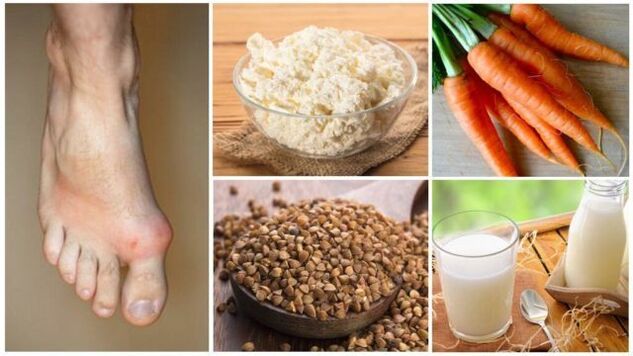
Improper nutrition, combined with a decline in the ability to absorb nutrients will lead to the progression of gout. This disease develops when the concentration of uric acid in the blood exceeds the permissible limit (for men over 420 μmol / l, for women - 350 μmol / l). The disordered metabolism leads to the salt of this acid deposited on the intestinal wall, blood vessels, on the surface of joints and damages vital organs of human life.
Over time, the disease becomes chronic with frequent relapses. In the acute phase, the patient feels severe pain at the localization site of the pathological process. The gout diet helps to normalize uric acid levels and reduce the rate of recurrence.
Why Diet for Gout?
The important task of treatment measures is to reduce the nature and frequency of manifestations of the disease. This can be achieved by reducing uric acid levels in the body.
The development of gout attacks is due to:
- consuming large amounts of foods high in purines;
- metabolic disorder.
Optimizing the diet allows you to start the processes of anabolism and excretion of substances correctly. Treatment measures aimed at eliminating the causes of the development of the disease are closely related to compliance with the restrictions of some food addictions. With the help of a properly designed diet plan, you can slow down the progression of the disease.
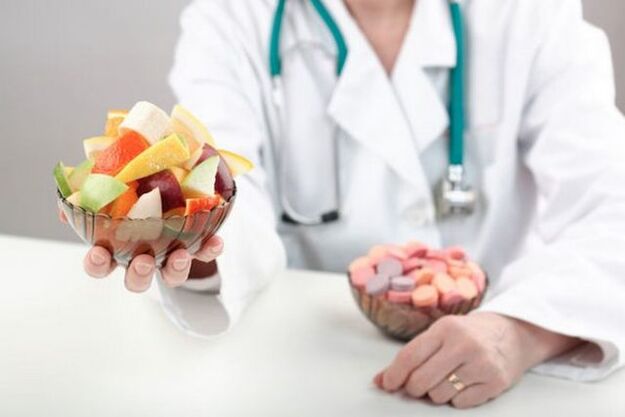
Foods that make up a person's daily meal should include foods that have a large amount of substances beneficial to the body.
Nutritional therapy for gout aims to relieve symptoms by eliminating the food ingredients that trigger them. The products that a person eats every day have a huge influence on the general state of health, being responsible for the chemical processes that occur in the human body throughout its life.
What should not eat with gout?
Based on studies, scientists have identified a list of products that directly cause the initial development of the disease and its further progression.
The list of what not to eat for gout includes:
- smoked spicy cheeses and cheese products;
- cholesterol-rich meat and bone products (pulp of young animals and pigs, hooves, buldyzhki);
- meat and fat bones, ears;
- high-fat fish (sardines, sardines);
- pickled vegetables, pickled fruits (cabbage, watermelon, cucumber, apple);
- hot and cold smoked products;
- legumes (peas, beans, soybeans, lentils);
- green vegetables, containing oxalic acid (spinach leaves, sorrel, rhubarb root);
- hot condiments, sauces;
- some vegetable varieties (brussels sprouts and cauliflower, radishes);
- organs of animals obtained during the dissection of meat (kidneys, liver, lungs, heart, brain);
- Oatmeal plate;
- confectionery products using fat;
- alcohol in any percentage;
- fruits and berries (grapes, raspberries, figs);
- hot, spicy and ethereal spices (bay leaf, horseradish, chili pepper);
- fats and oil products of animal origin (lard, margarine, lard);
- canned meat, fish and vegetable products.
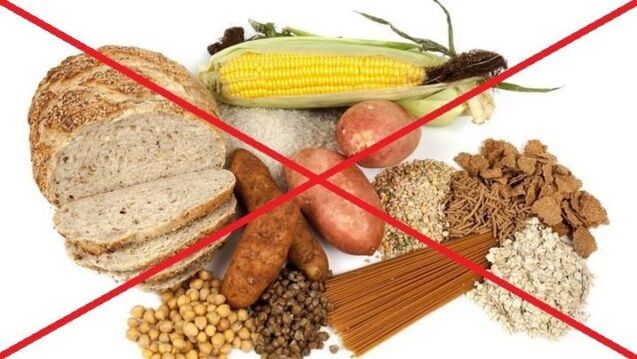
If the diet is unbalanced or contains large amounts of fatty, spicy, or heavy meals for the digestive system, then a person's metabolism can be disrupted.
List of products that should be restricted from use:
- strong coffee, tea;
- butter;
- plum;
- nightshade vegetables (eggplants, tomatoes, peppers);
- table salt, granulated sugar;
- fungus (exclusively at the time of remission).
To relieve pain, as well as maintain remission, it is important to eliminate these foods from the diet over a long period of time.
What Can You Eat When You Have Gout?
List of foods recommended for patients with this disease:
- dietary meat products (rabbit, poultry, lean beef);
- lean white fish (pike, perch, cod, pollock);
- bran and rye bread;
- chicken eggs (not including yolk);
- cereal dishes (rice, wheat, buckwheat, millet, pearl barley);
- fresh vegetables (turnips, carrots, cucumbers, cabbage, potatoes);
- seasonal fruits, berries (watermelon, cantaloupe, apricots, strawberries, peaches, cherries, blackberries, green apples);
- pasta;
- kernels of nuts (hazelnut, walnut, cedar);
- herbal teas and decoctions (Dubrovnik, basil, catnip);
- fermented dairy products, fresh cheese;
- freshly squeezed juices, fruit drinks, juices;
- cooked tomatoes;
- spices (turmeric, cumin, basil);
- vegetable oils (olive, rapeseed).
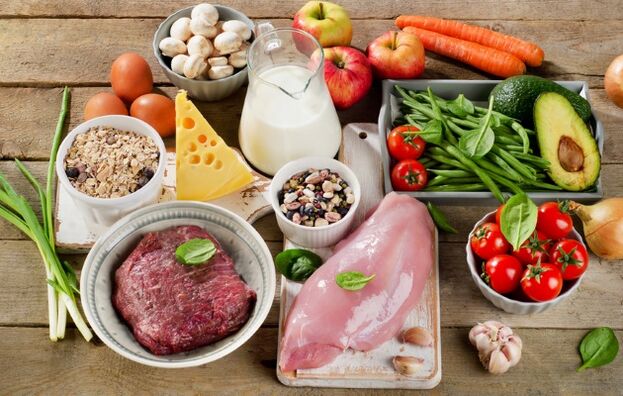
Nutritional therapy for gout will help patients quickly get rid of uncomfortable and painful symptoms at home.
In limited quantities, natural honey is useful for gout. This product is suitable as a sugar substitute.
Honey has many beneficial properties:
- immune stimulation;
- Antioxidants;
- improves metabolism;
- germicidal.
In the acute period should not abuse this beekeeping product. Patients with this disease need to eat foods rich in vitamins, trace elements, amino acids. A useful supplement is medicinal fish oil for gout.
General rules about food
Removing certain prohibited foods from your regular menu does not guarantee immediate relief. In addition, the list of products varies, depending on the stage and severity of the disease process. Thus, nutrition for gout during an exacerbation involves adherence to stricter restrictions than during remission.
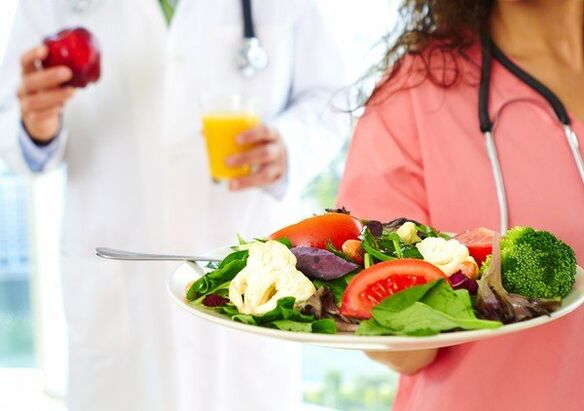
There is a general set of rules for patients with this condition, the observance of which is important in dietary therapy:
- Eat food in small portions throughout the day at short intervals (5-6 times). Fasting increases the amount of acetone in the urine. And this can aggravate the course of the disease.
- Chew food thoroughly, do not overeat.
- Limit the amount of salt used to prepare dishes (maximum 5 grams per day). Salt has the property of retaining fluid in the tissues, which, in turn, entails the deposition of uric acid salts.
- Optimize fluid balance in the body. To do this, you should drink at least 2 liters per day.
- Arrange fasting days. Prioritize vegetables, milk and fruits (except those that are prohibited from consumption).
- Stick to the restrictions for a long time, because short-term use of the therapeutic diet is ineffective.
People with severe metabolic disorders and a history of diabetes, gout need to exclude foods that cause uric acid and insulin levels in the blood to spike. The diet for gout and diabetes is designed to reduce these indicators, in order to avoid the development of exacerbations and complications.
How to prepare food properly?
The grocery list's limitations were not the only items observed. It is important to choose the right cooking method when preparing your meals.

There are no special requirements for product preparation, except for meat processing.
Cooking is allowed in the following ways:
- for a couple;
- bake;
- extinguish;
- boiling;
- tired.
Contraindications to cooking by:
- Fry;
- smoke;
- salt and pickling;
- ferment.
Do not use stale or burnt food. The temperature regime of the food consumed must be optimal for the food and should not exceed the temperature of 40 degrees Celsius. The food must not be rough and chewy. If needed, each dish can be chopped with a blender.
Effective diet: menu for every day
Medical nutrition in terms of the content of important ingredients (protein-sugar-fat balance), calories, vitamins, microelements, amino acids should correspond to the physiological needs of the patient.
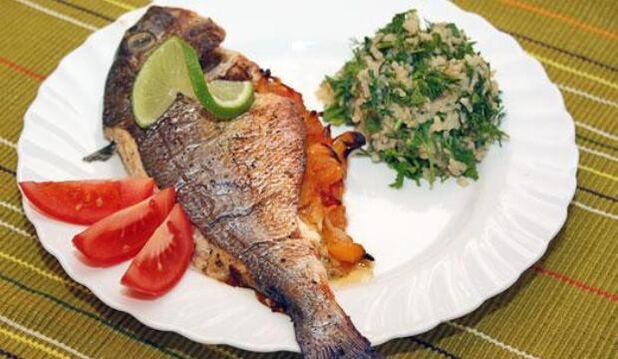
Approximate Diet for Gout and High Uric Acid:
1 day
First breakfast: boiled cod, mashed potatoes, black bread, white cabbage salad, seasoning with sour cream, a cup of weak coffee with saccharin.
Second breakfast: cheese casserole, hard-boiled eggs, bran bread, tea.
Lunch: vegetarian soup with tubers and chips, beef stew, buckwheat porridge, fresh cucumber, 1 apple.
Dinner: carrots, pasta, milk, cookies.
At night: 200 ml of kefir.
Monday
First breakfast: stewed white cabbage, 1 hard-boiled egg, black bread, cappuccino.
Second breakfast: cappuccino, biscuits.
Lunch: lean borscht, bran bread, grilled poultry fillet, boiled rice, fruit jelly.
For dinner: potato stew with vegetables, vegetable casserole, bran bread with butter, a glass of broth.
At night: 250 ml of curd.

Day 3
First breakfast: vegetable salad (white cabbage, carrots, apples), weak coffee.
Second breakfast: fresh cheese with sour cream, rosehip broth.
Lunch: barley soup with sour cream, steamed cutlets, mashed potatoes, berry jelly, wholemeal bread.
For dinner: carrot slices with fruit, goulash, a glass of milk.
Before going to bed: steamed prunes.
4th day
First breakfast: grated carrots with sour cream, wheat porridge, a glass of green tea.
Second breakfast: dried fruit, chips, cookies.
Lunch: Noodles with milk, boiled chicken with baked pumpkin and potatoes, fruit jelly, black bread.
For dinner: cheesecake baked in the oven, carrots and apples, a cup of tea with lemon.
At night: 200 ml of warm milk.
Day 5
First breakfast: porridge cooked with buckwheat milk, green tea.
Second breakfast: a glass of fresh carrots.
Lunch: vegetable rice soup with sour cream, boiled beef, beetroot caviar, honey basil, black bread.
For dinner: pumpkin casserole with sour cream, a weak tea, crackers.
Before going to bed: rosehip soaked in honey.
6 days
First breakfast: chicken protein omelette, stewed radish, white bread, a thin cup of coffee.
Second breakfast: stewed zucchini, fruit and berries.
Lunch: vegetarian barley soup, boiled potatoes, stewed meatballs, jelly, rye bread.
Dinner: boiled rice with milk, drink diluted tea.
Before going to bed: a glass of yogurt.
The standard diet plan is prepared by the doctor. Combination options for dietable meals are varied. Diet #6 is popular for gout. Its main principles are to exclude foods and dishes with a high purine content, add alkaline beverages to the diet, and be gentle in the cooking process. An independently compiled menu with restrictions on the quantity and nature of foods can lead to a prolonged illness.














































































